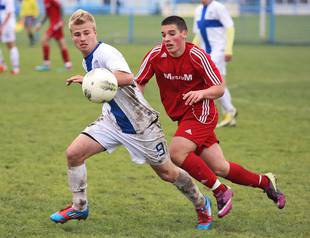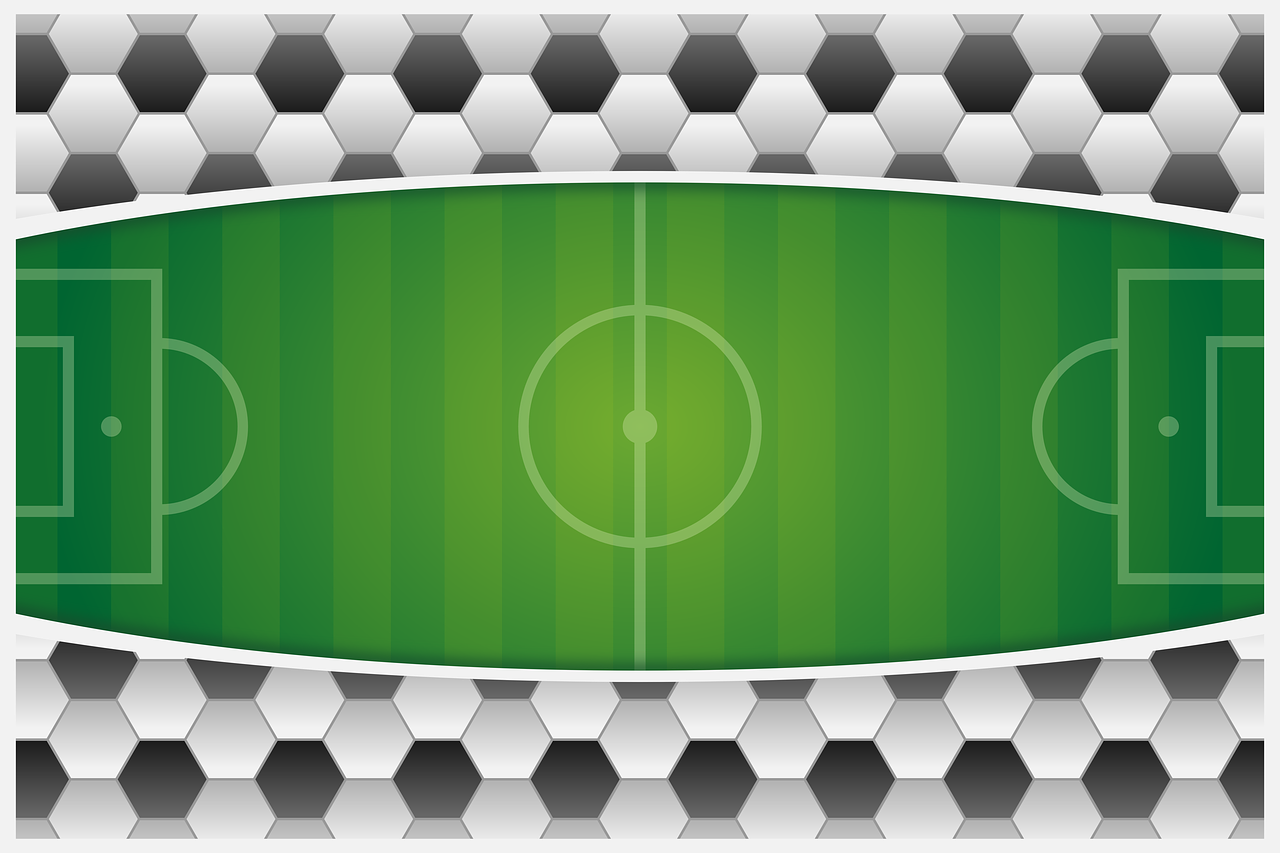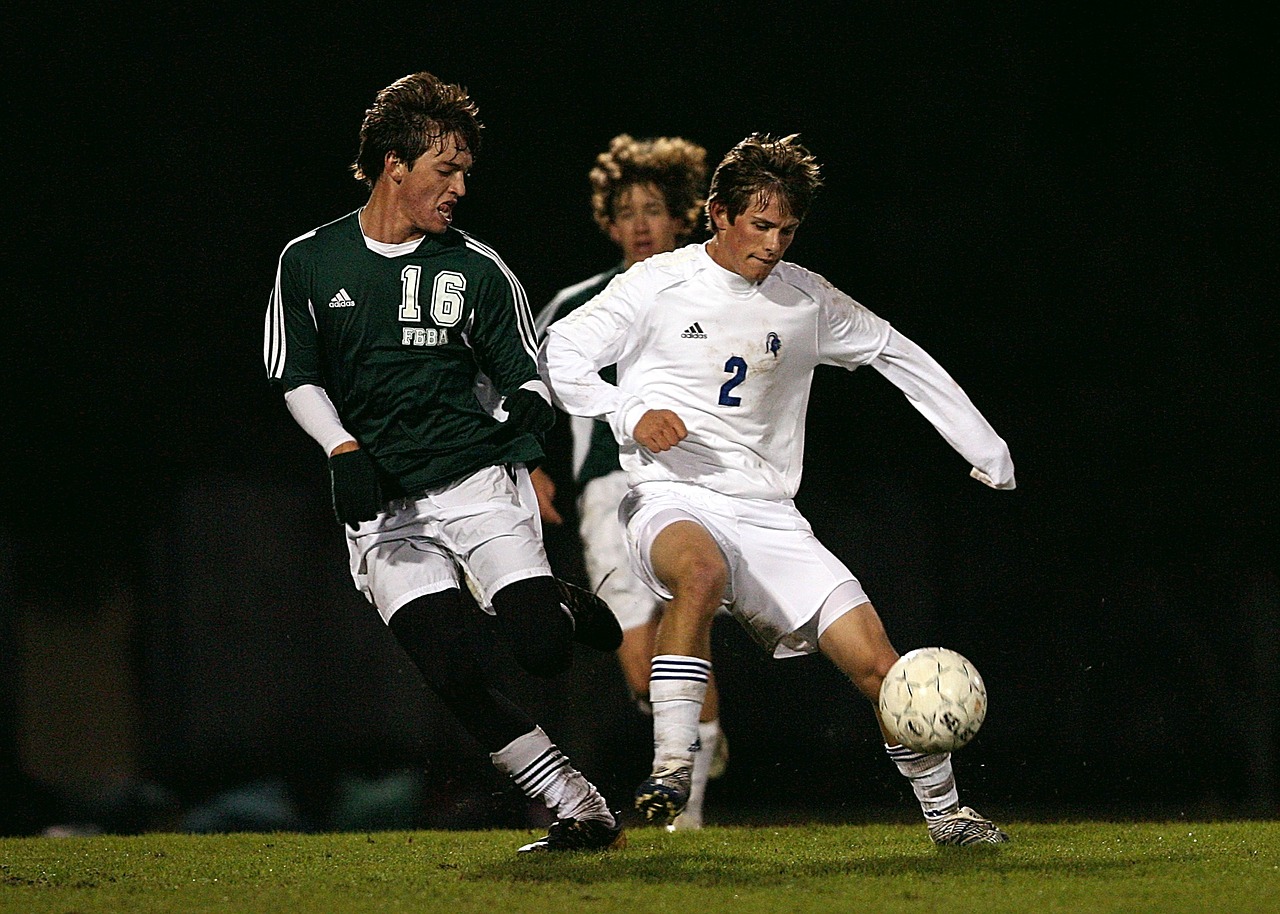
Soccer Football History
There is much doubt as to the actual time and place of the origin of soccer. Football, a game played by kicking a ball, can be traced back to early Greek and Roman civilizations. Historians said that football came to England by the Romans, but the Irish claimed that kicking games were played in their land a thousand years before the coming of the Romans.
Be that as it may, football games suffered many vicissitudes before coming into their own. These were played by the soldiers in camps and in the streets of England, where these were forbidden in 1314 and made a penal offense under Henry VIII in 1504. The Puritan era had a drab effect on all sports and it was not until 1603, during the reign of James I that sports in England were again revived.
The famous old English public schools began to develop football games after the ban was lifted, and from the same common stock were developed the three kicking games of football or soccer.
Soccer in the United States gained fame after World War I. Although it is an International game now, it fails to rank high as an intercollegiate game in the Philippines. It is, however, gaining popularity and being included in physical education programs in many schools.
Soccer is an international game. It is the national sport of 53 countries in the world.
Facilities And Equipment
Playing Field
The field of the soccer game measures 109.72 m long and 68.58 m wide (for the boys) and 73.15 to 91.44 m long and 36.57 to 54.86 m wide (for girls).

Equipment include flags, ball, soccer shoes, and high and thick socks.
Terminologies Used in Soccer
BLOCKING - a force that involves stopping the progress of an opponent by using body contact.
CARRYING - a force in which the goalkeeper takes more than three steps while in possession of the ball.
HEADING - involves moving the ball with the head.
OFF-SIDE - term used if a player is ahead of the ball in the opponent's territory and nearer the goal than the two opponents. The penalty is not imposed if such player does not interfere with the play. In throw-ins and corner kicks, there are no off-sides.
PANT - dropping the ball and kicking it with the foot before it touches the ground.
TACKLE - method of getting the ball away from an opponent without any body contact.
TRAPPING - stopping and gaining control of the ball by the use of the feet or one or both legs.
CORNER KICK - awarded to the attacking team when the ball passes over the goal line except between the goal posts and is last touched by a defender.
DRIBBLING - advancing the ball by series of short kicks.
FREE KICK - awarded to the offended team for fouls occuring outside penalty area.
GOOD KICK - given to the defensive team if ball goes over the goal line other than between the goal posts and is last touched by an offensive player.
KICK IN - putting the ball in play after it is out of bound
PASSING - kicking the ball towards a teammate
PENALTY KICK - awarded to the offended team at the penalty kick mark if the defensive player is fouled in his own penalty area.
ROLL-IN - putting the ball in play after a foul by both teams
VOLLEYING - kicking the ball while it is on the air
GOALKEEPER - a player who guards the ball
TOUCH - the side line and end lines of a soccer field
PENALTY MARK - a spot 12 yards from the goal line where each penalty kick is attempted.
Nature of the Game
Soccer is basically a running and kicking game. It is a team game that requires speed, endurance, body, and ball control. The objective of the game is to advance the ball down the field by using the body and the feet to score points by sending the ball between the goal posts and under the crossbar.
There are 11 players on a team. The goalkeeper is the only team member who may use his hands on the ball. He stays near the goalposts to guard against the entering ball. The other players in the team are the right and left fullbacks, right and center halfbacks, five forwards known as the center forward, right inner, right wing, left inner, and left wing.
Basic Fundamental Skills
In every skill that you will acquire or learn, there will be some suggested exercises or skill practices that will be introduced to develop your skill in soccer.
A. Running - The first aim is to develop the ability to run quickly. The ideal strike is a long, easy one with a definite rhythm. Although knee and ankle joints play important roles, the most important movements come from the hips. Arm movement, too, is important, for on this depends the poise of body. Running should be on the toss, for the hard, constant impact of the whole feet upon the ground jars the spine and detracts from the speed. Sprints should not exceed 25 yards, and might as well be less. These "bursts" should be used to break the rhythm of a long, swinging, easy pace. Cultivate a good style or running. On this foundation, running for speed and for stamina may be easily imposed.
Some Exercise For Speed
1. Starting the Engine
Running on the spot - to encourage arm action and knee-lift
Start slowly, gradually increase speed (vocal accompaniment if you want variety and exhalations)
Fists slightly clenched - right fist to touch very slightly, and vice versa
As speed increases, aim should be to try to make the arms move faster than legs. Knees well raised, no kick behind.
2. Circle Race
Inner circle remains standing, outer circle running in easy rhythm.
When whistle blows, each runner attempts to touch the one in front, the one touched immediately drops out.
At signal, turn about. Change over and repeat.
3. Beat Your Man
Objective: Try to outwit the guard by dodging, dribbling or swerving to get the ball over the line.
B. Kicking - Three ways:
1. Generally speaking, a low kick is preferable to a high one. A ball may be occasionally kicked high in order to clear incoming forwards, but if one can find a way through them instead of over them, he should make use of it.
For the low kick, get as close to the ball as you can. The non-kicking foot should be right alongside the ball. The toe of the kicking foot must be drawn back as far as possible, so that the ball is "hit" with the top of the instep; the knee is bent all over the ball and as the kick is made, the knee is straighten out so that the foot, with the toe still kept well back, follows through in the direction of the ball. Keep the eyes on the ball and the body well forward.
2. The ball may be lifted by kicking it with the outside of instep, the knee not being so much bent, and the body not allowed to move forward. There is retrain in body's natural forward movement. It is sometimes advisable to kick with the inside of the toe to get height and swerve on the ball, e.g., corner kicks, free kicks, lifted into the goal areas. This kick is more difficult and there is a tendency to wrap the foot around the ball. The swing should again come from the hip.
3. The third type of kick is really a push with the whole inside of the foot. This kick or push best serves the purpose of passing a ball accurately over a short distance, e.g., 10-15 yards.
Games and Exercises:
Exercises: Spring step with a hop. This teaches the necessary action of kicking.
1. Shooting Skittles
Use weighted skittles against a wall. Each man in the team to kick, following the spring step with a hop, the ball towards the weighted skittles. Three, four or more balls are in use. Team knocking down most skittles wins.
2. Use of Wall
Mark the wall with white circles or squares. Count each direct hit, line shots do not score. Use both feet.
C. Volleying (Kicking a moving ball) - The art of volleying a ball clearly with either foot is quite difficult, but it must be mastered thoroughly, especially by full-backs. The swing must come from the hip, but the length of the kick will depend on a large extent upon the straightening of the knee-joint and the follow-through of the leg and the body. If the movement is merely a straightening of the knee-joint, the ball will most likely be skied, and little length will follow. The correct volleying action must be mastered first.
Exercises and games for development of the art of volleying:
1. Spring step with a hop. The hop should be exaggerated to become almost a jump. This will produce movements necessary for good volleying. This exercise should be used fairly because it gives the volleying action without the distraction of having to hit the ball. Players may move about in any direction while performing this exercise.
2. In the next exercise, the ball is introduced. Players work in groups of five or six, spaced out in haphazard order with about 8 yards between each player. A ball is kicked by one player and must be volleyed by the one in whose direction it goes. Should he fail to volley it, or should he allow the ball to touch the ground three times, he drops out. The weeding-out process is carried on util only one remains in the group. Each group winner plays in the final contest and the same procedure is followed in the group.
3. If a fairly high wall is available, much valuable practice in volleying may be obtained without the tedium of fielding the ball due to faulty kicking. Delays, the wall with one foot and volleying the rebound with the other foot. A competitive element may be introduced by working in fours, two playing volley a ball. The pair to score the first five points wins. Then, the winning pairs meet on a knockout basis.
D. The Jab - This kick is useful in passing accurately over a short distance not exceeding 15 yards. The chief movement here is from the knee and ankle-joints, which straightens the movement of impact of the ball with the outside of the instep. It is more useful aid to accurate placing of a pass.
Exercise:
Players work with threes, moving up and down the field on the run, and using the outside of the foot to which the ball comes.
Jabbing the Skittle
Use four skittles at the start. Gradually reduce to one. It may be used as a team game, point being scored when the objective is knocked down.
Using the Wall
Marks are placed on a wall. The player with the ball tries to hit these marks as he runs along, taking the ball on the run. On the return run, he brings the other foot into action.
E. Trapping the Ball - To "kill" a ball is a matter of timing the ball while it is falling and executing the correct movement at the right time. This timing, i.e., judging the direction of its flight and the rate at which it is moving and estimating exactly where it will fall, can only be successful if eyes are kept on the ball the whole time. Thus, we see the caution "Keep Your Eyes on the Ball" is often recurring. The correct movement requires the toss to be raised upward to catch the ball at the instant of its impact with the ground, under the sole of the foot, so preventing its rebound. The important movement is, this is the action of the ankle-joint. The toe has to be brought down just at the right movement or the ball will escape.
Exercises to develop ability to trap a ball:
1. Stationary Trapping
Players should work in groups of two, three or four, well spaced out. The ball is thrown up in the air by one player to drop just in front of the another. The latter has to trap it, the coach deciding the method to be used. This player picks it up and throws it in the air to the next player, and so on. Throwing the ball prevents loss of time, which would result from faulty kicking.
The same exercise, but each player in turn kicks the ball to his fellow player who traps it in accordance with instruction with left foot or right foot.

2. Trapping Relay
The team captain throws the ball into the air so that the first man in his team may trap it and dribble it up to him. The man leaves the ball with his captain and runs to the back of his team. As soon as he gets into position, the rest of the team moves up one place forward. When the captain sees the last man's head up, he throws the ball to the next man, and so on.
F. Dribbling the Ball - This is an ability in which the player may express his individually. In dribbling, a player reveals his "touch." The natural way to dribble is a series of the short quick tap from one foot to the other, the ball being propelled by the inside of the foot. No player, however, should contend best until he can practice, it will be found that much more delicate touch can be acquired by using the outside foot. Moreover, a player who can use both the inside and outside foot can keep his opponent "guessing" as to the direction of his pass up to the very last moment. To dribble with the outside foot, the toe must be turned well in, and the outside of the ball is kicked, or rather pushed, with the outside of the little toe. The beginner should practice by himself until his ankles become as flexible that he can dribble along a straight line, without allowing the ball to be pushed outward by the foot.
The chief points to remember in dribbling are:
1. "Coax" the ball rather than kick it.
2. Never let the ball run away. Keep it within a yard of the foot.
3. Keep the body forward and head over the ball, but while watching the ball, also look at your opponents.
4. Dribble straight, i.e., as far as possible, parallel to the touch line, except when cutting in towards goal or deliberately dribbling across the field preparatory to making a reverse pass to the other wing.
Exercise to develop dribbling ability:
1. Left-Right
This is to inculcate ball control. The class works in teams, with the team leader controlling. The ball should be kept from touching the ground - using the left and right floor alternately.
Each member of the team has a try - the team leader counting the number of times it is properly kicked before the ball touches the floor. The player who makes the highest number of kicks is the team representative. These selected winners play off.
2. Dribbling Relay
Class in terms - Each member is given a number. The coach calls out a number and that player runs to the front, gets control of the ball and dribbles around each remaining ball in his team. The first to get the ball into the marked circle scores a point for his team. When he gets to his place, another number is called.
3. Dribbling - Obstacle Relay
Usual position. Following up method. Team back to original formation first wins.
a) Obstacle fairly wide apart
b) Obstacle closer together as proficiency increases
No. 1 in each team starts off when whistle blows. He dribbles around the outside of the team and brings it to No. 2, who starts off and brings it to No. 3, No. 5 or last man brings it to No.1. Team back to original position first wins.
G. Heading - The proper heading of a ball brings the neck-muscles into play, and it is only by effective control of these muscles that the ball can be given direction. Regular and systematic exercises of the neck-muscles must be used. In volleying, the ball must be watched until the last possible moment before contact with the correct timing of this forward movement will send the ball a good distance. It must be remembered that the aim usually is to bring the ball to the ground, preferably to the foot of a teammate. To do this, the neck must move forward, followed by a forward body movement, and the chin is brought onward, finishing well tucked in, so that a downward flight of the ball is produced.
The head of the ball is sideways, the side of the forehead must be used and the neck is twisted sharply either to the right or to the left. To bring the ball downward, a slight downward movement of the head towards the shoulder is necessary.
In heading the ball, the jump and the timing of the jump are very important factors. If the ball is in the air, the body should be well stretched. This can only be achieved by a quick bending and stretching of the joints at the ankles, knees and hips, together with a contraction of the calf and thigh muscles. The landing, too, is important, because after heading the ball, a quick recovery is essential. The ankle-knee and joints should yield at the moment the feet touch the ground, preventing any jar, and the body is brought into position again for running.


















